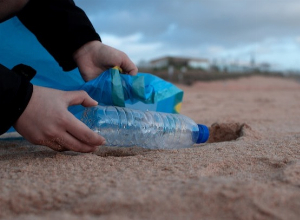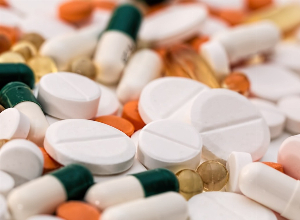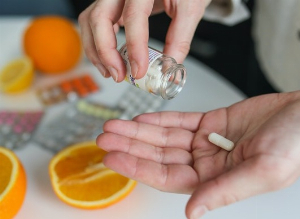Everyday water and air pollutants and their impact on health!
Published 19 Jun 2023 • By Polina Kochetkova
One in four individuals has no access to clean drinking water. While air pollution is one of the top risk factors for death worldwide, with millions of fatalities annually. Even though such statistics can sound very scary, it is not too late to make a change. Today, we talk about everyday pollutants and their effects on our health in detail. Also, we discuss the importance of reducing pollution and ways to help minimize pollution sources.
What are the everyday pollutants? How do they affect our health? How can we help to reduce pollution?
Keep reading to find out!

What is a pollutant?
The contamination of biological and physical elements in the earth's atmosphere is called pollution. It deeply impacts both people and the environment around us. Ecosystems suffer damage, affecting everything from the water we drink to the air we breathe. Pollution can have a large impact on our health, causing several diseases and resulting in 9 million deaths from all types of pollution, yearly, on a global scale.
Air pollution
In light of the Covid 19 pandemic, air pollution may have taken a back seat in recent years, but it's no less worrying.
Airborne microscopic, invisible particles reach our lungs and bloodstream in great detail. These pollutants are responsible for a third of deaths from strokes, chronic respiratory conditions, and lung cancer. Asthma and other chronic respiratory diseases are brought on by ground-level ozone, which is created when several contaminants combine with sunlight.
Each year, the effects of air pollution cost the lives of 7 million people. The estimated annual cost of treating pollution-related ailments is 1 trillion dollars.
In addition to posing a major threat to public health, air pollution also harms the environment. It lessens biodiversity, decreases ocean oxygen concentration, and accelerates climate change.
The six main air pollutants classified by the EPA are:
Carbon monoxide
CO is a gas with no odor or color that, if inhaled in excessive quantities, may be hazardous. Any time something burns, CO is emitted. Cars, trucks, and other machinery that burns fossil fuels are the main emitters of CO in the outdoor air. The quality of the air within your house can be impacted by several things, including gas stoves, unvented kerosene and gas space heaters, and gas-powered items.
When breathing air with a large CO content, the amount of oxygen carried in the bloodstream to vital organs like the heart and brain is decreased. Short-term exposure to increased CO levels may lead to decreased cardiac oxygenation and angina, or chest pain. People with certain types of cardiac problems may be especially concerned when CO levels are high outside due to decreased cardiac oxygenation.
Lead
Sources of pollution from lead differ from place to place. At the national level, the processing of metallic substances as well as piston-engine aircraft using aviation fuel are the main sources of lead in the air. Other sources include power plants, utilities, and producers of lead-acid batteries. The areas closest to lead smelters often have the greatest lead air concentrations.
Lead levels in the air were reduced by 98% between 1980 and 2014 as a consequence of EPA regulatory actions, which included the elimination of lead from petrol for motor vehicles.
Lead exposure can have negative effects on the cardiovascular system, neurological system, kidneys, immune system, reproductive and developmental systems. The blood's ability to transport oxygen is also impacted by exposure to lead. Nowadays, the negative effects of lead are most likely to be found in children, as neurological issues.
Nitrogen oxides
One of the extremely reactive gases referred to as nitrogen oxides (NOx) or oxides of nitrogen is nitrogen dioxide (NO2).
The burning of fuel is the main source of NO2 in the atmosphere. NO2 is created as a result of emissions from vehicles, power plants, and heavy production equipment.
Respiratory system might get irritated when breathing air with a high NO2 content. Short-term exposures have been shown to contribute to respiratory illnesses, including asthma. The longer the exposure, the worse are the effects on the respiratory organs.
Ground-level ozone
Oxides of nitrogen and volatile organic compounds undergo chemical interactions to produce ground-level ozone. When sunlight is present, pollutants released from factories, power plants, industrial boilers, refineries, and other sources engage in chemical reactions.
Ozone can still reach high levels throughout the winter months, although it is most likely to do so on hot, bright days in metropolitan areas.
Our health can be negatively impacted by ozone in the air, especially on very hot days when ozone levels can rise dangerously high. People with asthma are among those most at risk of damage from inhaling ozone-containing air.
Particle pollution
These particles can be formed by combining dozens of various compounds and come in a wide variety of sizes and forms.
Some are released straight from a source, including a fire, a chimney, a field, an unpaved road, or a construction zone.
The majority of airborne particles are created by complicated chemical processes involving pollutants from power plants, enterprises, and vehicles.
Particles with a diameter of less than 10 micrometers have the potential to go deep into the lungs and potentially into the bloodstream. The biggest threat to health comes from tiny particles, also known as PM2.5, which have a diameter of less than 2.5 micrometers.
In several locations in the US, fine particles are also the principal source of limited vision (haze).
Sulfur oxides
The incineration of fossil fuels by power plants as well as other manufacturing facilities is the primary cause of SO2 in the atmosphere. Smaller amounts of SO2 emissions come from naturally occurring events like volcanoes, industrial activities like-metal extraction from ore, and large machinery like trains and ships that utilize fuel with high sulfur content.
Breathing can become difficult and the respiratory system can be damaged by exposures to SO2. Children in particular are vulnerable to these effects of SO2, as are people with asthma.
How can we help to reduce air pollution?
Our houses and communities often have many small sources of air pollution. These potential sources are close to where we live and work which involve cars, trucks, lawnmowers, backyard fires, dry cleaners, and more. Here are some ways we can help to reduce air pollution: use your car less, avoid burning garbage, switch to electronic lawnmowers, plant more trees, try to use less energy, and recycle the items that you buy.
Water pollution
Pollutants in water may detrimentally affect people of all ages. Poorly controlled wastewater may include bacteria and parasites that can get into drinking water sources and cause illnesses like cholera and diarrhea.
Hazardous substances such as pesticides, herbicides, and chemicals from farms, companies, and houses can be fatal or have a persistent toxic effect that can cause brain damage or cancer.
When we use water for drinking and food preparation, several water contaminants can enter our bodies. From the digestive system, they can spread to the body's other organs and lead to a number of diseases.
When pollutants come into touch with the skin during laundering clothing or swimming in dirty water, skin irritations might occur.
Hazardous chemicals in water systems can also have an impact on the local flora and fauna. Those organisms occasionally stay alive by retaining the toxins in their bodies, only to be consumed by people who may later start feeling ill or have more severe symptoms of poisoning as a result.
Cholera, diarrhea, hepatitis A, typhoid, dysentery and polio are just a few of the illnesses that can spread due to contaminated water and poor sanitation.
Main water pollution elements include:
- Absorbed substance: Large particles of sand, silt, clay, and other material fragments wash into open water bodies.
- Heavy metals include chromium, lead, zinc, copper, arsenic, nickel, and mercury.
- Oil-based products: Air exchange is blocked by the oil foil, while particles of oil on the bottom cause sediments. The products of petroleum trigger a chemical reaction during degradation that creates highly hazardous byproducts.
- Pesticides are chemicals that are applied to crops to control weeds, rodents, and insects. Such chemicals create a highly dangerous water environment.
- Inorganic waste includes packaging, plastic, cans, bottles, and other human litter.
- Water contaminated by radioactive materials from nuclear power plants, nuclear tests, or ships using nuclear propulsion.
How can we help to reduce water pollution?
Some of the steps to reduce water pollution are very simple and can be performed today! These include using less water and trying not to flush chemicals down the drain. When spending time outdoors, remember to bring garbage bags to avoid littering. At home, do not forget to check your water pipes to avoid contamination.
Give it a "Like" and share your thoughts and questions with the community in the comments below!
Take care!

 Facebook
Facebook Twitter
Twitter



